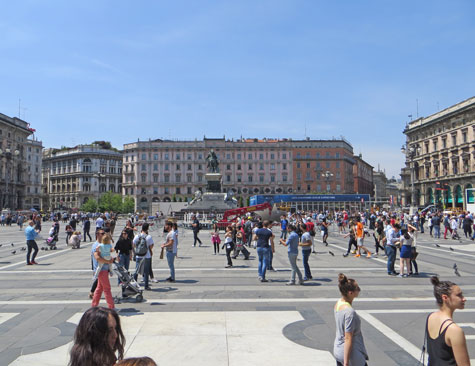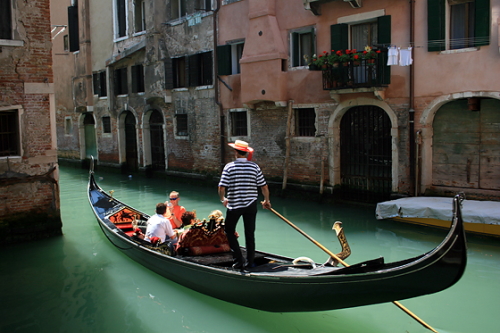


Of projects and assigments~







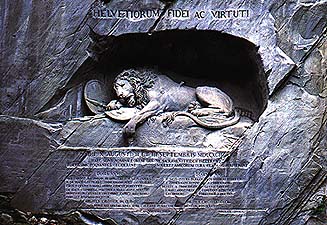


The Jungfraujoch is the lowest point on the mountain between Monch and jungfrau, at 3,471 meters. It is just above this location that the mountain station of Jungfraubahn is located. Jungfraujoch railway station is the highest in Europe, and the Jungfraujoch is often called the "Top of Europe" in tourist literature.

Adolf Guyer-Zeller first thought of the idea of a tunnel in 1893 and at that point he had planned to have seven stations inside the tunnel before reaching what is now the Sphinx. The building of the tunnel started on July 27, 1896 and took sixteen years to complete. The construction phase was troubled by many problems including monetary shortages, inclement weather, and mounting deaths due to construction accidents. The worst accident occurred in 1908, when thirty tons of dynamite accidentally exploded.
Once construction was halted, the tunnel reached only to the height of the Jungfraujoch, rather than the Sphinx, with only two intermediate stations. However, even in its current state, the Jungfraubahn is a significant achievement in engineering and construction, still holding the title for highest railway in Europe.
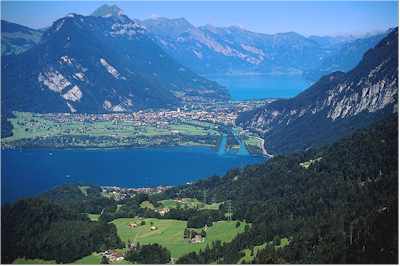
Interlaken is situated at the base of the Jungfrau Mountains between Lake Brienz and Lake Thun.
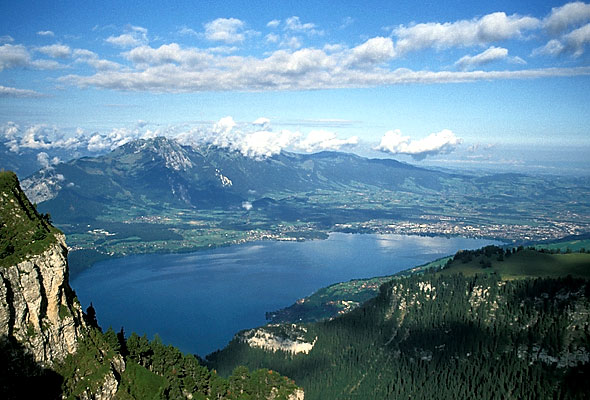
Lake Thun's approximately 2,500 square kilometer large catchment area frequently causes local flooding after heavy rainfall. This occurs because the river Aar, which drains the lake Thun, has only limited capacity to handle the excess runoff. The lake is fed by water from Lake Brienz to the southeast, which lies 6 meters higher than Lake Thun, and various streams int he Oberland, including the Kander. Lake Thun was created after the last ice age andw as originally part of Lake Brienz. The historic combined lake is called Wendelsee by geologists and historians.
Fishing os important enough to keep a handful of professional fishers employed. Since 1835, passenger ships have also operated on the lake. There are ten passenger ships in total, operated by the local railway company.
Following WWII and up till 1964, the Swiss Government disposed of unused munitions into Lake Thun. The quality of munitions dumped is reported to be from 3,000 to more than 9,020 tons.


Lake Brienz took its name from the village of Brienz on its northern shore. The shores are steep, and there is almost no shallow water in the entire lake.
Lake Brienz is the first river in which the river Aar expands. When it leaves Lake Brienz, it soon joins Lake Thun. The lake lies in a deep hollow between the village of Brienz on the east and Bonigen on the west. Its length is about 14 kilometers, its width 2.8 kilometers, and its maximum depth 260 meters. On the south shore are the Giessbach Falls and the hamlet of Iseltwald. On the north shore are a few small villages.
The character of the lake is gloomy and sad as compared with its neighbour, that of Thun. It is poor in nutrients, and consequently fishing is not very important. Like Thun, passenger ships are also operated on this lake.


